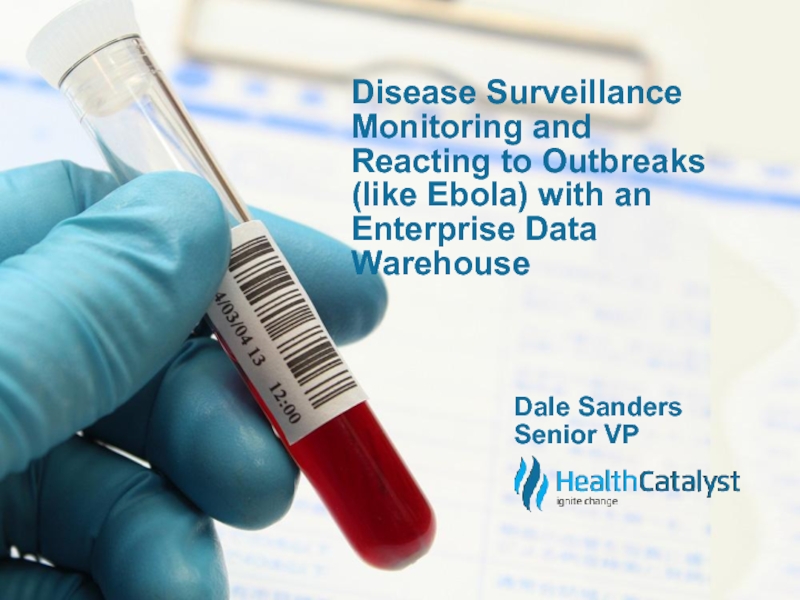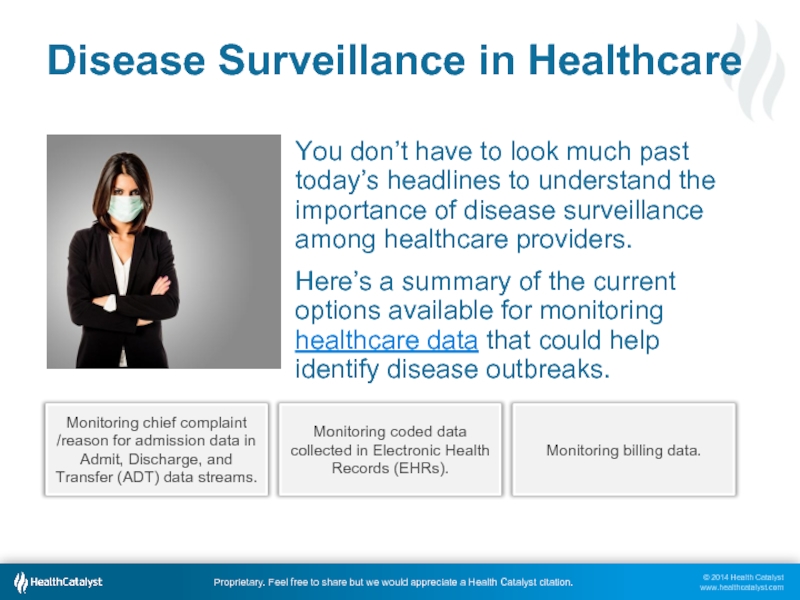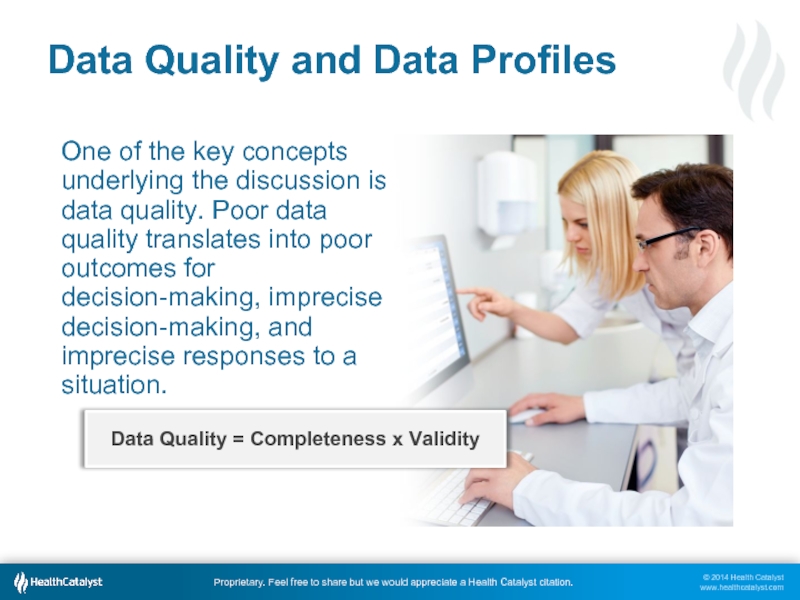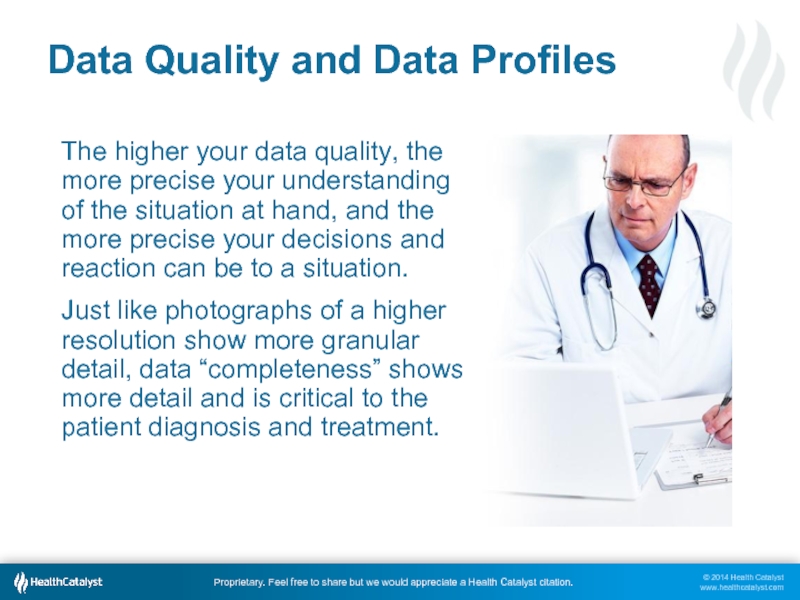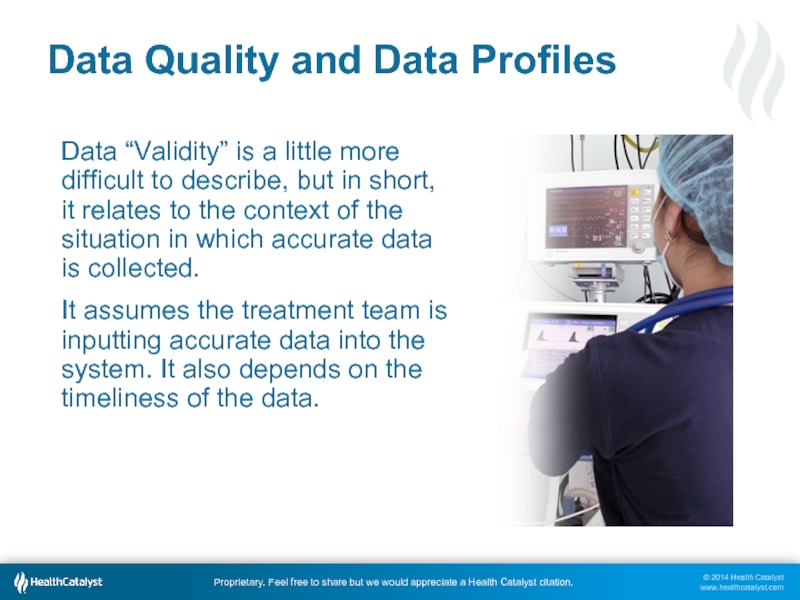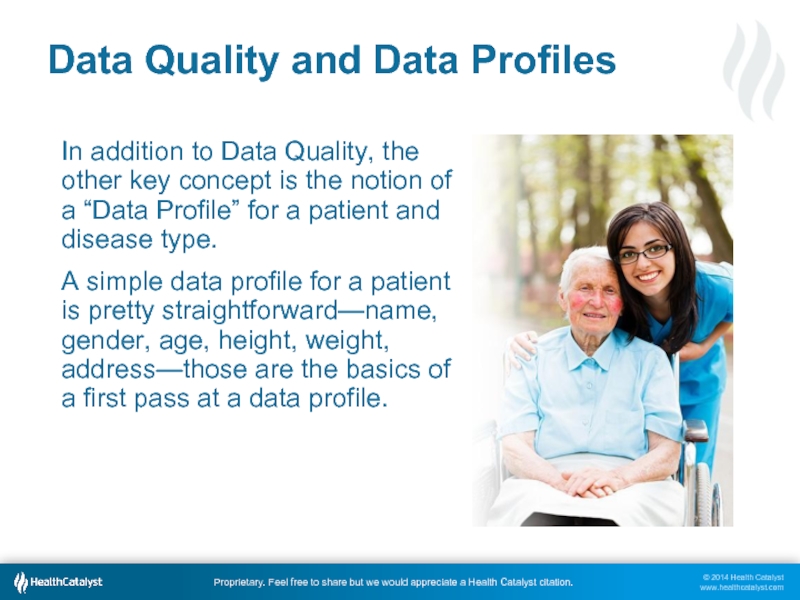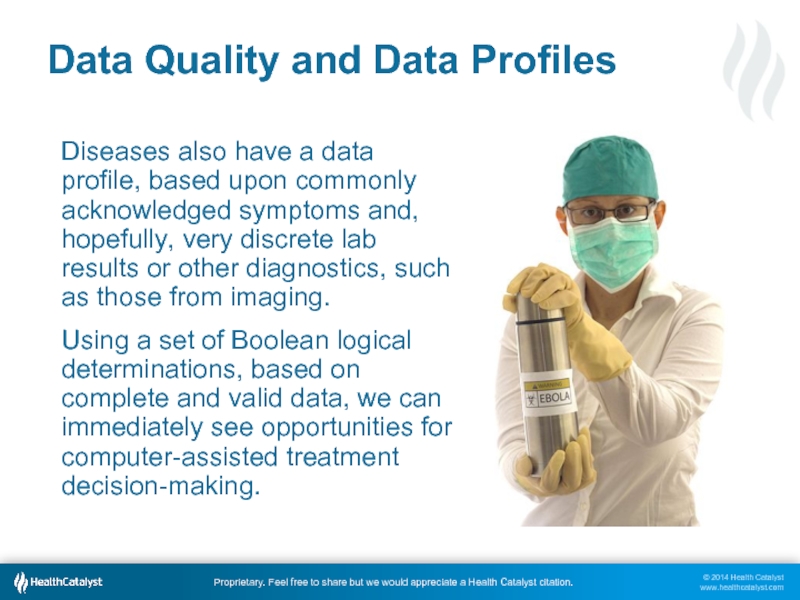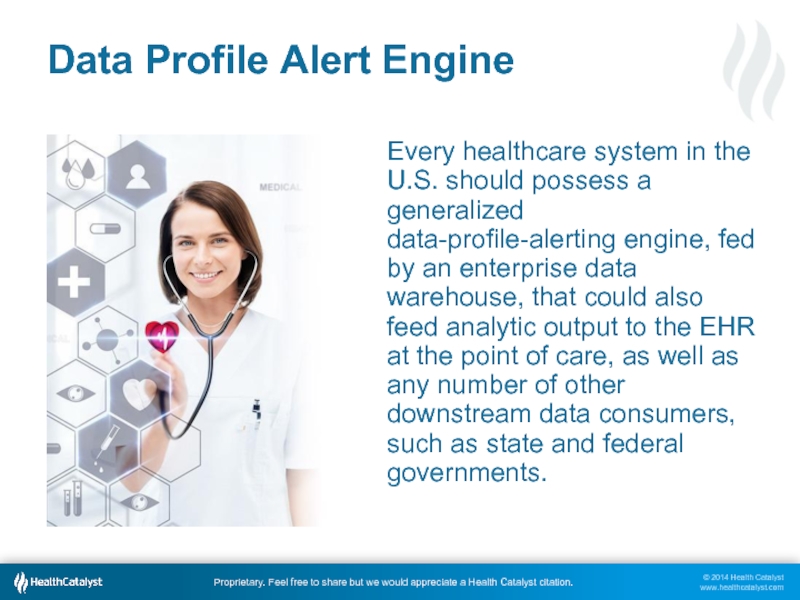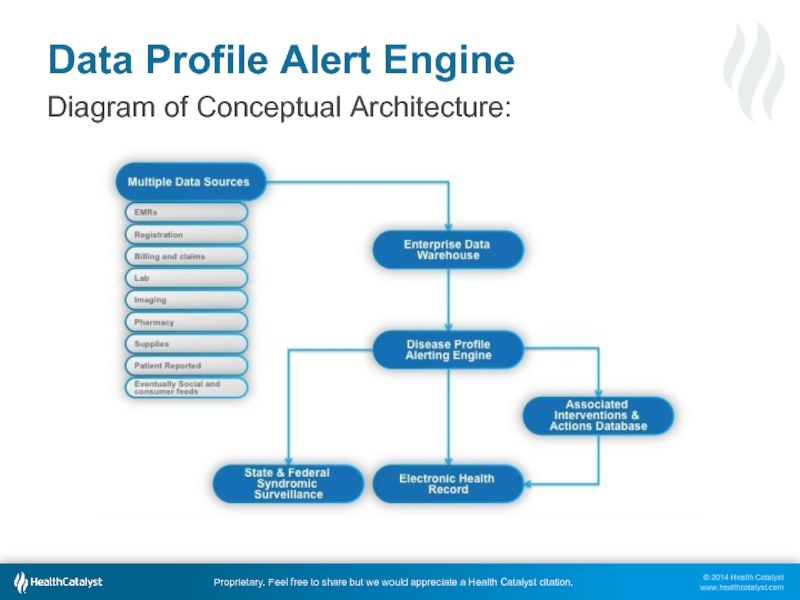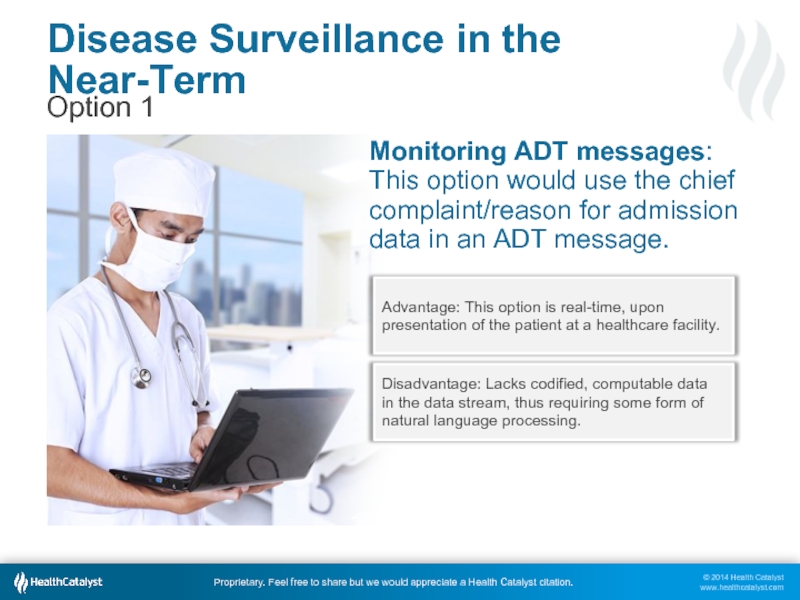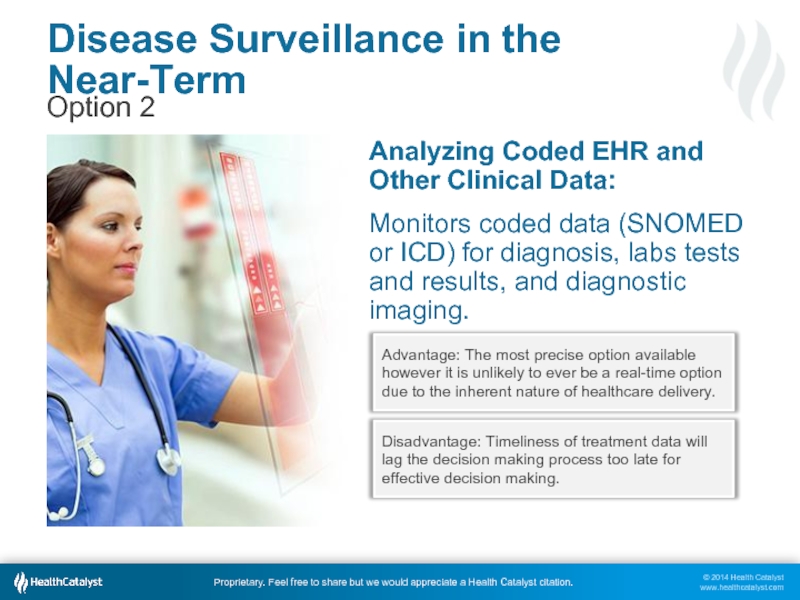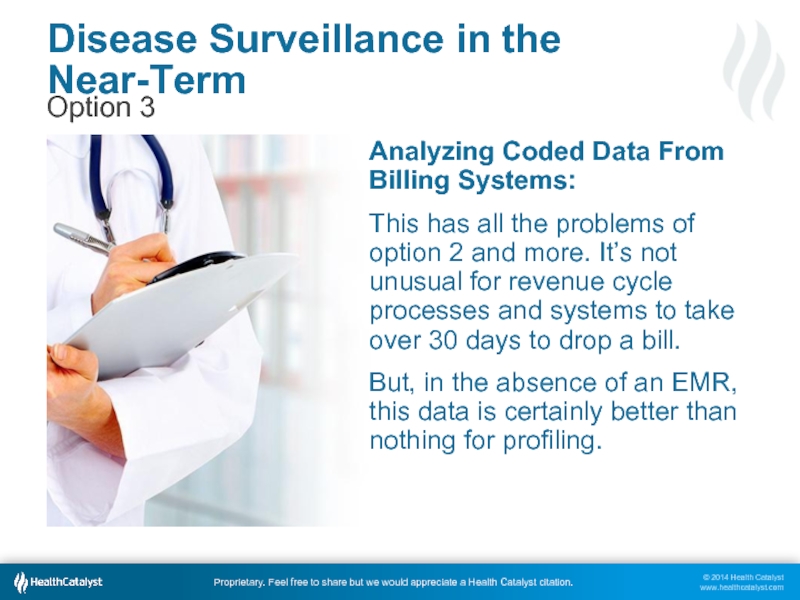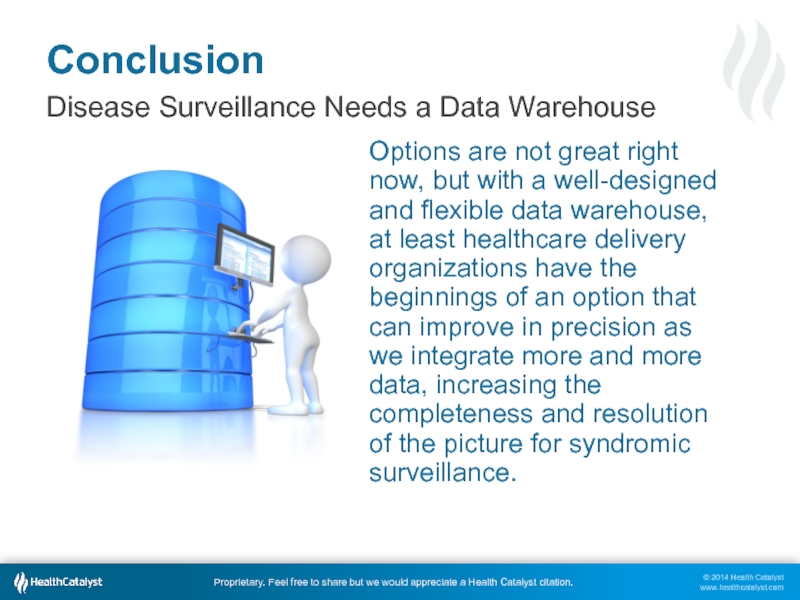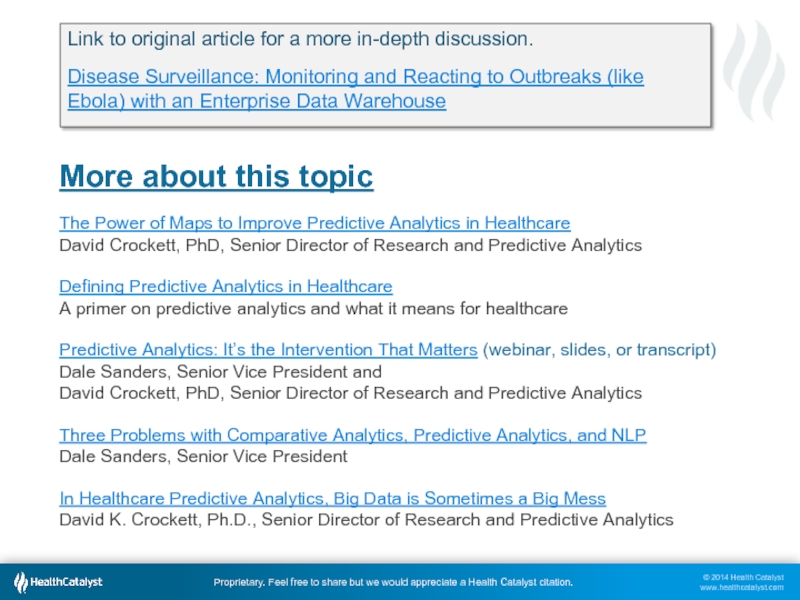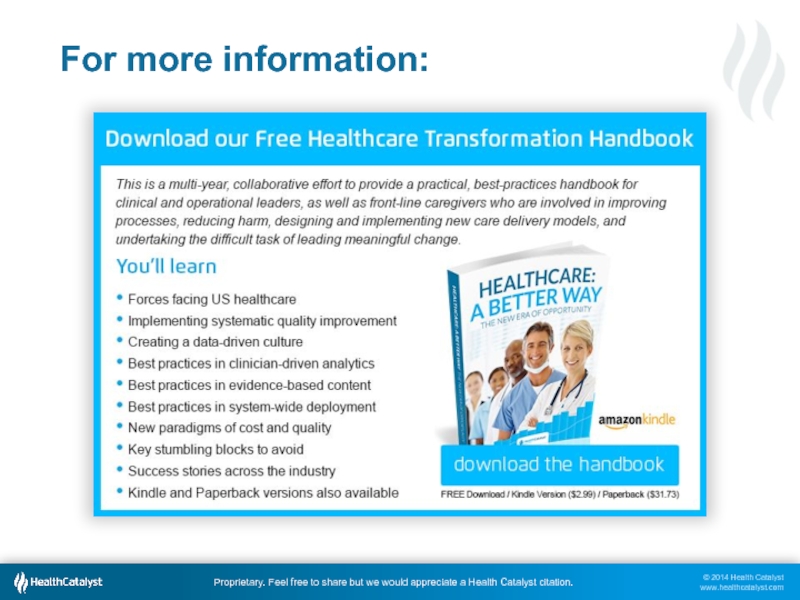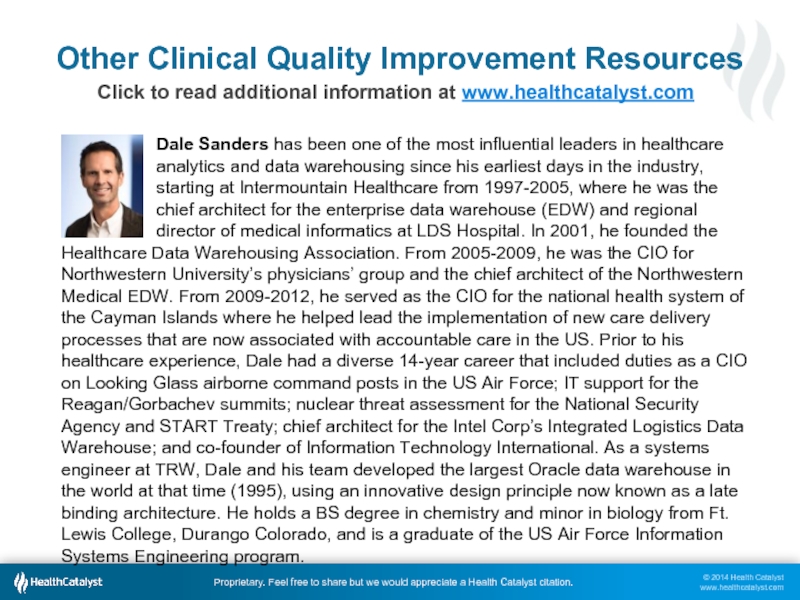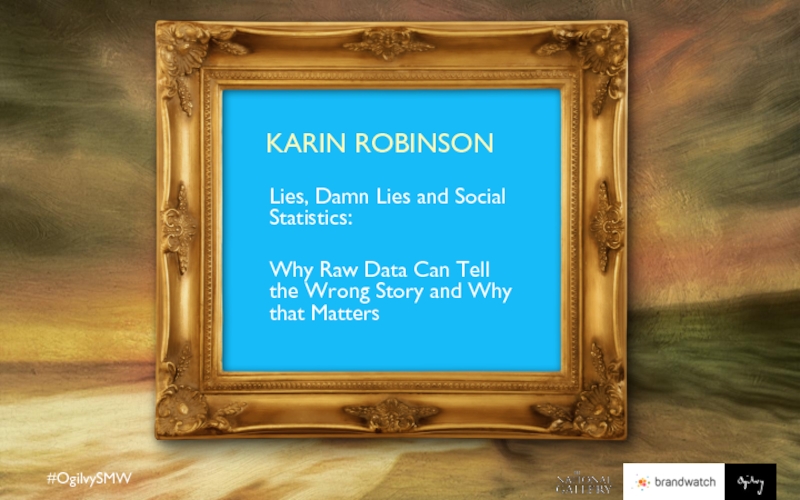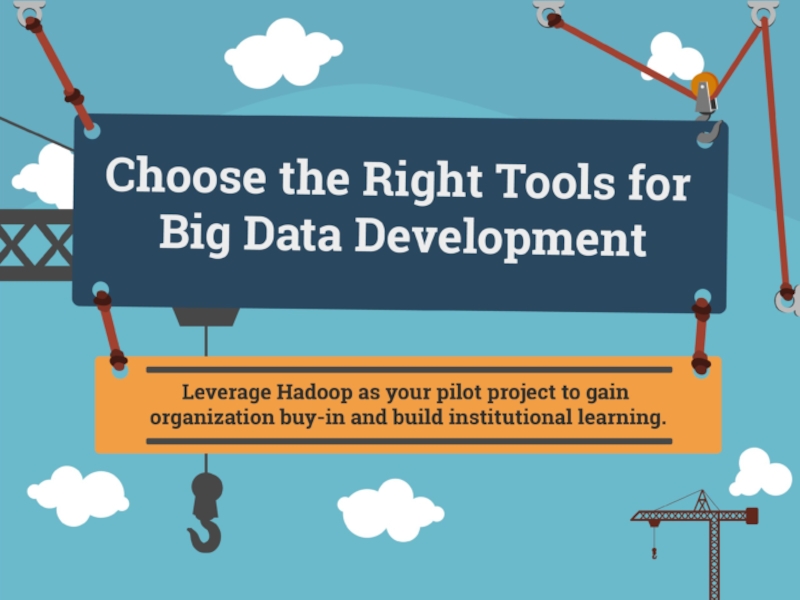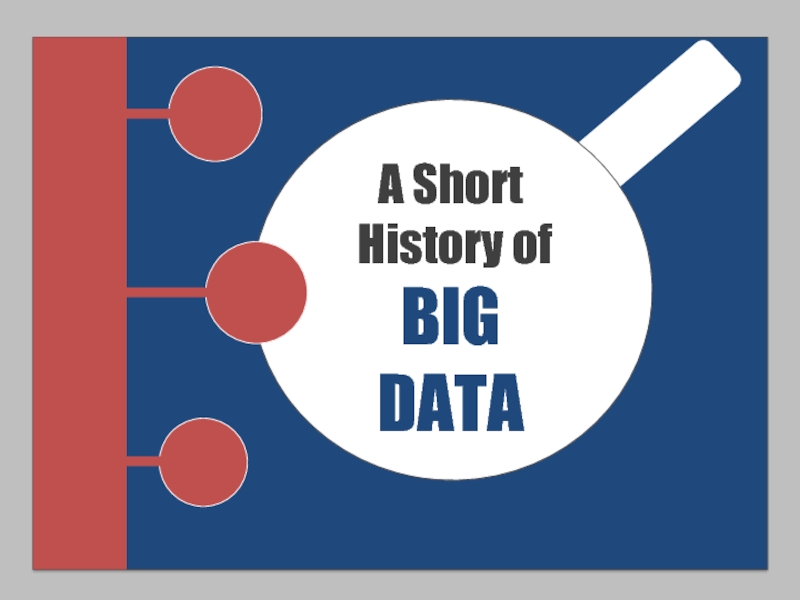- Главная
- Разное
- Дизайн
- Бизнес и предпринимательство
- Аналитика
- Образование
- Развлечения
- Красота и здоровье
- Финансы
- Государство
- Путешествия
- Спорт
- Недвижимость
- Армия
- Графика
- Культурология
- Еда и кулинария
- Лингвистика
- Английский язык
- Астрономия
- Алгебра
- Биология
- География
- Детские презентации
- Информатика
- История
- Литература
- Маркетинг
- Математика
- Медицина
- Менеджмент
- Музыка
- МХК
- Немецкий язык
- ОБЖ
- Обществознание
- Окружающий мир
- Педагогика
- Русский язык
- Технология
- Физика
- Философия
- Химия
- Шаблоны, картинки для презентаций
- Экология
- Экономика
- Юриспруденция
Disease Surveillance Monitoring and Reacting to Outbreaks (like Ebola) with an Enterprise Data Warehouse презентация
Содержание
- 1. Disease Surveillance Monitoring and Reacting to Outbreaks (like Ebola) with an Enterprise Data Warehouse
- 2. Disease Surveillance in Healthcare You don’t have
- 3. Data Quality and Data Profiles One of
- 4. Data Quality and Data Profiles The higher
- 5. Data Quality and Data Profiles Data “Validity”
- 6. Data Quality and Data Profiles In addition
- 7. Data Quality and Data Profiles Diseases also
- 8. Data Profile Alert Engine Every healthcare system
- 9. Data Profile Alert Engine Diagram of Conceptual Architecture:
- 10. Disease Surveillance in the Near-Term Option 1
- 11. Disease Surveillance in the Near-Term Option 2
- 12. Disease Surveillance in the Near-Term Option 3
- 13. Conclusion Disease Surveillance Needs a Data Warehouse
- 14. More about this topic The Power of
- 15. For more information:
- 16. Other Clinical Quality Improvement Resources Click to
Слайд 1Dale Sanders
Senior VP
Disease Surveillance Monitoring and Reacting to Outbreaks (like Ebola)
Слайд 2Disease Surveillance in Healthcare
You don’t have to look much past today’s
Here’s a summary of the current options available for monitoring healthcare data that could help identify disease outbreaks.
Monitoring chief complaint /reason for admission data in Admit, Discharge, and Transfer (ADT) data streams.
Monitoring coded data collected in Electronic Health Records (EHRs).
Monitoring billing data.
Слайд 3Data Quality and Data Profiles
One of the key concepts underlying the
Data Quality = Completeness x Validity
Слайд 4Data Quality and Data Profiles
The higher your data quality, the more
Just like photographs of a higher resolution show more granular detail, data “completeness” shows more detail and is critical to the patient diagnosis and treatment.
Слайд 5Data Quality and Data Profiles
Data “Validity” is a little more difficult
It assumes the treatment team is inputting accurate data into the system. It also depends on the timeliness of the data.
Слайд 6Data Quality and Data Profiles
In addition to Data Quality, the other
A simple data profile for a patient is pretty straightforward—name, gender, age, height, weight, address—those are the basics of a first pass at a data profile.
Слайд 7Data Quality and Data Profiles
Diseases also have a data profile, based
Using a set of Boolean logical determinations, based on complete and valid data, we can immediately see opportunities for computer-assisted treatment decision-making.
Слайд 8Data Profile Alert Engine
Every healthcare system in the U.S. should possess
Слайд 10Disease Surveillance in the Near-Term
Option 1
Monitoring ADT messages: This option would
Advantage: This option is real-time, upon presentation of the patient at a healthcare facility.
Disadvantage: Lacks codified, computable data
in the data stream, thus requiring some form of natural language processing.
Слайд 11Disease Surveillance in the Near-Term
Option 2
Analyzing Coded EHR and Other Clinical
Monitors coded data (SNOMED or ICD) for diagnosis, labs tests and results, and diagnostic imaging.
Advantage: The most precise option available however it is unlikely to ever be a real-time option due to the inherent nature of healthcare delivery.
Disadvantage: Timeliness of treatment data will lag the decision making process too late for effective decision making.
Слайд 12Disease Surveillance in the Near-Term
Option 3
Analyzing Coded Data From Billing Systems:
This
But, in the absence of an EMR, this data is certainly better than nothing for profiling.
Слайд 13Conclusion
Disease Surveillance Needs a Data Warehouse
Options are not great right now,
Слайд 14More about this topic
The Power of Maps to Improve Predictive Analytics
Defining Predictive Analytics in Healthcare A primer on predictive analytics and what it means for healthcare
Predictive Analytics: It’s the Intervention That Matters (webinar, slides, or transcript) Dale Sanders, Senior Vice President and David Crockett, PhD, Senior Director of Research and Predictive Analytics
Three Problems with Comparative Analytics, Predictive Analytics, and NLP Dale Sanders, Senior Vice President
In Healthcare Predictive Analytics, Big Data is Sometimes a Big Mess David K. Crockett, Ph.D., Senior Director of Research and Predictive Analytics
Link to original article for a more in-depth discussion.
Disease Surveillance: Monitoring and Reacting to Outbreaks (like Ebola) with an Enterprise Data Warehouse
Слайд 16Other Clinical Quality Improvement Resources
Click to read additional information at www.healthcatalyst.com
Dale Sanders has been one of the most influential leaders in healthcare analytics and data warehousing since his earliest days in the industry, starting at Intermountain Healthcare from 1997-2005, where he was the chief architect for the enterprise data warehouse (EDW) and regional director of medical informatics at LDS Hospital. In 2001, he founded the
Healthcare Data Warehousing Association. From 2005-2009, he was the CIO for Northwestern University’s physicians’ group and the chief architect of the Northwestern Medical EDW. From 2009-2012, he served as the CIO for the national health system of the Cayman Islands where he helped lead the implementation of new care delivery processes that are now associated with accountable care in the US. Prior to his healthcare experience, Dale had a diverse 14-year career that included duties as a CIO on Looking Glass airborne command posts in the US Air Force; IT support for the Reagan/Gorbachev summits; nuclear threat assessment for the National Security Agency and START Treaty; chief architect for the Intel Corp’s Integrated Logistics Data Warehouse; and co-founder of Information Technology International. As a systems engineer at TRW, Dale and his team developed the largest Oracle data warehouse in the world at that time (1995), using an innovative design principle now known as a late binding architecture. He holds a BS degree in chemistry and minor in biology from Ft. Lewis College, Durango Colorado, and is a graduate of the US Air Force Information Systems Engineering program.
